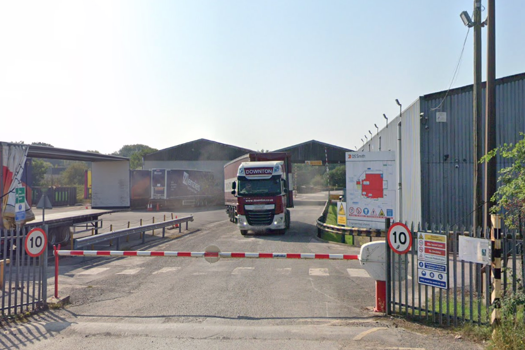Jo Francis Tell us about your time at Gerber. What will you bring back to EFI from your experiences there?
Scott Schinlever Gerber is squarely in the world of industrial automation, with automated cutting systems, and there are a lot of similarities to digital print – it’s on-demand and doing something to a substrate but it’s cutting instead of printing. The difference is, Gerber is much further along on their ecosystem of end-to-end. It was a great learning opportunity for me because that’s the direction we’re obviously going in with digital print as the speeds keep increasing and keep driving higher volumes of production.
The other great thing I learned was just making sure you’re a very reliable partner to a customer. Not just hardware and software but also your whole service, aftermarket and support infrastructure, and consulting. So I’m going to bring back a lot of good lessons to EFI. It was a very valuable time for me.
And how did you come to be back at EFI? How did that happen?
During Covid we really looked hard at our infrastructure at Gerber, and decided that hey, we’re probably a little bit too top heavy. So it made sense for me to go ahead and pursue another opportunity, it was a joint decision and I left them on very good terms.
And then, as I just started letting my network know that I was available, I had all intentions of taking a few months off. The next day, Jeff [Jacobson, EFI CEO] and I were on a video meeting together. I’d never met him before and we both just saw just a tremendous opportunity, we put something together very quickly and here I am. No summer vacation!
It’s good to have you back. Does the EFI business feel different?
I think the difference is Jeff has put together a culture of Centres of Excellence, where we have to make sure we drive maximum efficiency in the organisation, whether it’s in service, operations, sales or our technology development. What I like about that and why it’s important is, it’s not just about saving costs. It’s about freeing up dollars to invest in growing your business and that’s why the efficiency is so important. EFI grew – especially on the inkjet side – by a series of acquisitions. We need to take that final step to make sure we’re really fully integrated and coming across to the market as one EFI, and also making sure we’re leveraging all this incredible technology. I think Jeff’s got us on the right path to do that and that’s a big reason I came back.
That’s good to hear.
What hasn’t changed is the innovation. The passion of the people and colleagues and passion for our customers. You can’t lose that in the process because that’s the magic at the end. Being able to partner with customers and help them grow their businesses.
Have you got a to do list? What are the top three things on your action plan?
I do. It’s more than three but boiling it down to three… First off we need to maximise our near-term revenue and profit. I think that’s on everybody’s to-do list [because of Covid]. We owe it to our customers to come back strong, and serve them as they increase their business again, but also to our colleagues. And so that’s first and foremost.
The other big item on the to do list for me is ensuring the new product development roadmap really is in that EFI tradition of very strong differentiation that’s highly valued by our customers and adds a lot of value.
Also making sure we capture all those technologies and we leverage common technologies, including the ink side. The first three letters of inkjet are ink, and that’s a huge advantage of EFI. It’s not just the end-to-end software and the Fiery workflow, it’s also our deep knowledge and development on the ink side and that’s going to become more and more important.
The third thing, and in a way it’s the most important, is making sure we have our human capital, our people, aligned around our business goals and fully engaged in driving the business. It’s about tapping into the passion of our team, getting over Covid, which will happen and which will give us new muscles, so to speak, in how we face challenges. I really want to make sure I maximise that.
How is the pandemic situation changing your thinking?
I think everybody’s talked about the challenges enough. At the end of the day there’s a ton of opportunity as well, especially with what we’re driving with the digital transition, like the corrugated segment where we’ve established a very strong leadership position with our Nozomi technology.
Now what’s happening with Covid is, not only is labour hard to get, but the labour we get we have to keep safe with social distancing, and that means spread out more in a factory with less density of people. So when you think about that, an end-to-end solution of high-speed digital printing is actually needed, and what’s so exciting is EFI has all those pieces. I actually think it’s a big opportunity and it’s going to accelerate the digital transition.
It really is increasing so many existing trends
I think digital is going to get squarely put into mainstream production, and then people will discover that magic of being able to version and customise on the fly. Think about the world of home delivery to your doorstep and that corrugated box. That’s the new display graphic, it’s like a store shelf, except it shows up on your doorstep. There’s going to be a ton of opportunity for EFI, and for the industry. Another critical area of focus for us is on the textile side. Reggiani is a huge opportunity for us that I’m very excited about.
Any inkjet areas that EFI would like to get into that it’s not in already?
It’s an embarrassment of riches, which is what I love about it! There are a lot opportunities for fine tuning different ink sets with hybrid technology for industrial applications. EFI has such an advantage because we start from the ink. That’s the first piece, and then you tune the device to get the ink onto the substrate. I think it’ll give us a lot of opportunities, you might call them niches today but they’re huge analogue volumes, and they’ll become a mainstream application for us over time.










